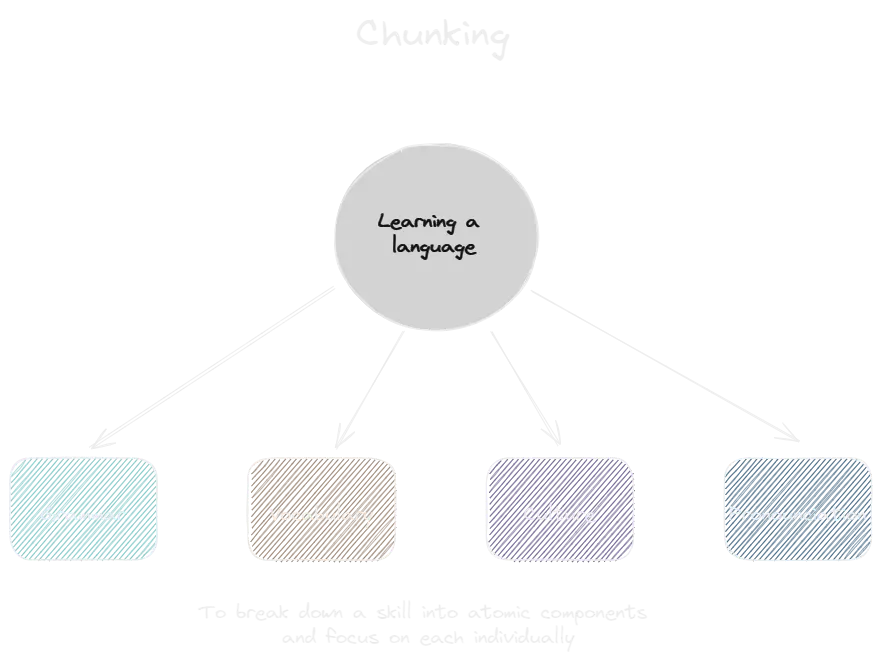Chunking
Notes
A method for learning or processing information, to break a topic down to it's more basic and smallest components Distillment, understanding and practicing each one separately until we reach Mastery. This helps us turn Complexity into Simplicity and Clarity. It is much easier to understand one small thing than trying to do all at once. The smaller the chunk, the easier it is to get relevant Feedback and improve on that specific task.
Chunking also imitates how we naturally learn in many situations. It's a form of Layering, where each component is built on the previous one. Like how you first learn addition before you advance to multiplication.
,If we take learning a new language as an example, we can break down the process to:
- singular vs plural
- feminine vs masculine (if relevant)
- tenses (future, past, present)
- pronouns (I, she, he, they...)
Each one is learned separately, and together these become the building blocks that form a knowledge base.
The disadvantage with chunking is that it's hard to learn or sense emergent properties. Because we focus on each component individually, we sometimes miss the "bigger picture", of how these components interact with each other. For example, Simulations are a different form of practice, one that attempts to recreate the experience in it's entirety, instead of breaking it down to smaller pieces.
Visual

Overview
🔼Topic:: Learning (MOC) ◀Origin:: Ultralearning (book) 🔗Link::